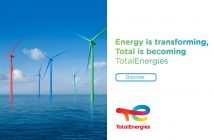
New Zealand must actively contribute immediately to the global effort to avoid dangerous climate change, according to the latest report from the Royal Society of New Zealand.

Richard Bedford
There are many opportunities to limit climate change by reducing the greenhouse gas emissions that are the main cause of climate change, says Royal Society of New Zealand President Professor Richard Bedford.
“I believe New Zealand has a significant opportunity to both prepare and adapt for the future while transitioning to a low-carbon economy,” Bedford says.
“The risk of not acting to mitigate the adverse effects of climate change or not protecting ourselves from these effects is vastly greater than the risk of over-investing to protect ourselves and our environment.”
The society’s Climate Change Mitigation Panel investigated how New Zealand can reduce the impact of climate change (mitigation options), and assessed the technical and socio-economic options available to reduce New Zealand’s greenhouse gas emissions or remove them from the atmosphere (sequestration).
The panel’s key findings include:
New Zealand’s GHGs
- The climate is changing – average temperatures are increasing due to human activity, particularly the historically high level of greenhouse gas (GHG) emissions.
- In order to limit temperature rise, and associated risks of accelerated sea level rise and more frequent extreme weather events for example, the world must reduce GHG emissions and work towards a low-carbon economy.
- Stabilising the world’s climate requires net global emissions of GHGs to be reduced to zero before the end of the 21st century, especially emissions of carbon dioxide (CO2) as it is long-lived in the atmosphere.
Global increase
- Our gross GHG emissions per capita are well above average for developed countries.
- Our annual gross and net GHG emissions continue to increase. (‘Net’ accounts for CO2 removed by forests.)
- The main sources of CO2 emissions are from heat and electricity supply, transport fuels, cement manufacture and forest harvesting.
- New Zealand also produces an unusually large portion of methane (CH4) and nitrous oxide (N2O) emissions due to the significant role of agriculture in our economy. This accounts for around half of our gross annual GHG emissions.
Increasing renewables
- Increasing the share of renewable electricity generation to reach New Zealand’s 90 per cent target by 2025 is technically and economically possible.
- An even higher share is possible but would need a more flexible grid, energy storage, and back-up generation (possibly thermal-plant) to meet seasonal peaks, especially in dry years when hydroelectric power is constrained.
Smart energy
- Renewable heat systems have good potential for buildings and industry. Distributed heat energy systems and a smart electricity grid incorporating small-scale, renewable electricity generation systems, demand-side management, and intelligent appliances could play a future role.
Low-carbon transport
- New technologies and low-carbon travel choices can play a part, including more fuel-efficient vehicles; low-carbon fuels such as renewable electricity and biofuels; using buses, light rail, cycling and walking; and improving urban design to encourage their use.
- Journey avoidance and modal shifts for freight, such as greater use of rail and sea, will also assist.
Energy management
- GHG emissions can be reduced in the residential and commercial building sector through better energy management and improved minimum performance standards for appliances.
- Emissions reductions can also result from improving insulation levels; retro-fitting existing building stock; integrating renewable energy systems; and supporting innovative ‘green building’ designs.
Industrial energy use
- The present dependence on burning coal and natural gas for process heat can be displaced by bioenergy, geothermal, solar thermal and electro-thermal technologies.
- Energy efficiency initiatives can reduce GHG emissions significantly but may need further incentivising to meet the short investment time frame of businesses.
- Carbon dioxide capture and storage (CCS) could be an option in the long term and, if coupled with bioenergy (BECCS), would give negative GHG emissions.
Agriculture
- Increasing adoption of best practices can help reduce the present growth in emissions, but even if current research into additional mitigation technologies proves successful, strong reductions in absolute emissions would eventually involve trade-offs with current growth targets for livestock production and would rely on developing alternative low-emitting land-uses.
- Some measures to reduce emissions could also support water quality.
Forestry
- Significantly increasing the land area of plantation forests could offset up to a quarter of our total GHG emissions over the next two to three decades. However, there are only low levels of planting at this time so when current forest stands are harvested our net emissions (gross emissions less CO2 removals) are likely to rise.
- Forest sinks can only be an interim solution because there is a limit to the area of available land.
Emissions trading
- The NZ Emissions Trading Scheme has been ineffective in reducing New Zealand’s emissions. This has reflected low international carbon credit prices.
- Reform is needed to provide clear and stable investment signals.
- Emission pricing has an important role but to be most effective it needs to be embedded in a wider package of mitigation policies and actions.
Supporting choices
- Policies, targets, regulations, infrastructure, and market settings should be developed systematically to support low-carbon choices by businesses, cities and households.
- An independent board or entity to provide evidence-based advice to Parliament and the public would be valuable.
There is a clear case for immediate action, Bedford insists. “New research and technologies will continue to emerge but many mitigation options are already well-understood and achievable,” he says. “Delaying actions would result in a greater amount of emissions overall, given that CO2 emissions accumulate in the atmosphere for hundreds to thousands of years.”
However, evidence for mitigation pathways for New Zealand is deficient Bedford believes. “Investment in data gathering and deeper analysis will help refine early mitigation actions and support a transparent public debate about longer term desirable and feasible mitigation pathways.”
New Zealand’s current target is to reduce emissions to 30 per cent below 2005 levels by 2030, the report notes. “If we want to achieve this target through increased contributions from domestic actions rather than relying on reductions off-shore and purchasing the related carbon credits, this will require immediate attention,” Bedford urges.
“We can start immediately by deploying low-risk mitigation actions whilst planning for and trialling more ambitious emission reductions options and system changes to commence the necessary transition to a low-carbon economy.”
This article appeared in the June issue of Asia Pacific Infrastructure News.




